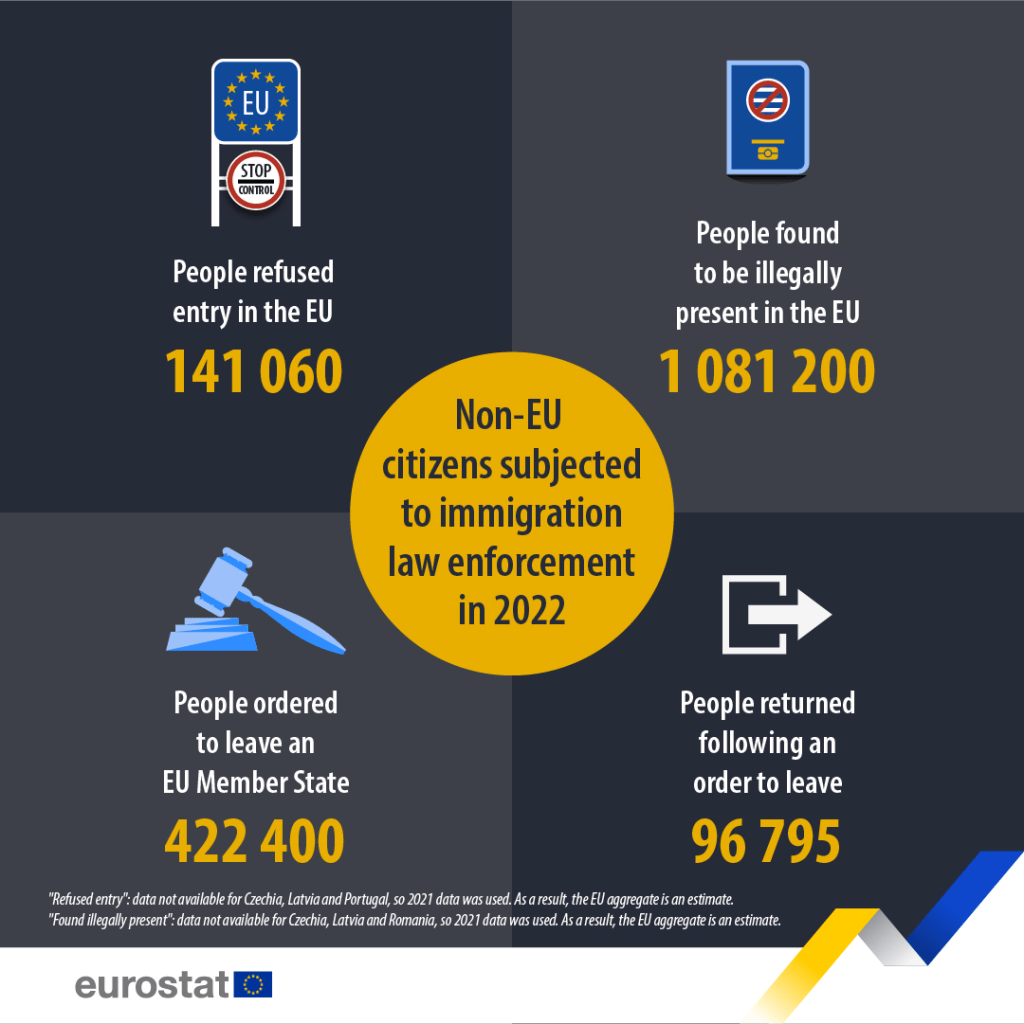In 2022, 141 060 non-EU citizens were refused entry into the EU territory while 1.08 million were found to be illegally present in one of the EU countries.
The number of non-EU citizens issued with an order to leave an EU Member State was 422 400. Following an order to leave, 96 795 non-EU citizens were returned to another country (including other EU countries), and of this, 77 530 were returned outside the EU.
This information comes from data on the enforcement of immigration legislation published by Eurostat today. The article presents a selection of findings from the more detailed Statistics Explained article.
Non-EU citizens refused entry into the EU: +1% compared with 2021
In 2022, some 141 060 non-EU citizens were refused entry into the EU at one of its external borders, up 1% compared with 139 000 in the previous year.
The largest number of refusals of entry were reported by Poland (23 330), followed by Hungary (15 780), Croatia (11 800) and Ireland (9 240).
Ukrainian citizens accounted for the largest number of refusals in the EU (28 890, -43% compared with 2021). Notably, the main reasons for refusing entry to Ukrainians were: ‘persons already stayed 3 months in a 6-month period’ (27% of the total refusals of Ukrainians in the EU), ‘no valid visa or residence permit’ (21%) and ‘purpose and conditions of stay not justified’ (20%). The next largest numbers were recorded for citizens of Albania (15 630) and Russia (10 860).
Illegally present non-EU citizens: +59% compared with 2021
In 2022, around 1.08 million non-EU citizens were found to be illegally present in the EU, indicating a 59% increase compared with 2021 (679 730).
Hungary reported the largest number of non-EU citizens found to be illegally present in the EU (222 520), followed by Germany (198 310) and Italy (138 420).
Syrians accounted for the highest number of people found to be illegally present in the EU (175 960). The next highest numbers were recorded for citizens of Afghanistan (119 520) and Morocco (60 215)
Non-EU citizens ordered to leave EU Member States: +23% compared with 2021
In 2022, some 422 400 non-EU citizens were ordered to leave the territory of the EU countries, up 23% compared with the previous year (342 100).
Among EU countries, France reported the largest number of non-EU citizens ordered to leave its territory (135 650), followed by Croatia (40 525) and Greece (33 500).
The highest number of people ordered to leave a Member State territory was observed among Algerians (33 535), Moroccans (30 510) and Pakistanis (25 280).

Immigration law enforcement in the EU – figures for 2020 |
Around 96 795 non-EU citizens returned to another country
In 2022, some 96 795 non-EU citizens returned to another country following an order to leave the territory of a specific EU country.
France reported the largest number of non-EU citizens returned (14 240), followed by Germany (13 130) and Sweden (10 490).
Albanians (9 950) topped the list of non-EU citizens returned to another country, followed by Georgians (8 040) and Syrians (5 590).
Source: Eurostat








Leave a Reply